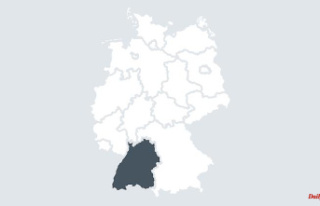Anyone looking for an alternative to a used VW Polo or Opel Corsa could also be happy with a second-hand Hyundai i20. At least if you don't place high demands on the performance of the engines. How does the Hyundai i20 (GB) fare at TÜV?
In the Hyundai nomenclature, the number 20 stands for the small car models. The Koreans introduced this with the first i20, which debuted in 2008 and was available until 2014. With the new name, one broke away from the predecessor Getz also linguistically. The second generation (2014 to 2020) is visually and technically on par with the VW Polo and Opel Corsa. The question remains as to how it will fare at the TÜV.
body and interior
With a length of 4.04 meters, the i20 is now one of the short compact cars. Initially launched as a five-door, Hyundai followed up with a two-door in 2015. The vehicle, marketed as a coupé, was intended to appear sportier. If you like it more rustic, look for Active models in a crossover sheet metal dress. It doesn't matter which version you choose: the space available is good for the exterior length.
There is also nothing to complain about when it comes to trunk volume, which is lavish in the five-door model with values between 326 and 1042 liters. The i20 can also combine plus points in terms of workmanship and material quality.
In 2018 the little one received a facelift. The refreshed models can be recognized by the modified radiator grille, different rear design and colorful accents in the interior. The coupe was dropped from the program with the facelift.
engines and propulsion
The range of engines is reasonable, you won't find a "GTI" or "OPC" version for the second generation of the i20. The basic unit is a 1.2 liter four-cylinder with 55 kW/75 hp, which - like the slightly more powerful variant with 62 kW/82 hp - does not require turbo support. In order to keep the engines in a good mood for torque, eager use of the manual five-speed gearbox is announced. The 1.4 suction engine with 74 kW/100 hp is not a temperament bolt either, but it does bring 134 Nm into play and offers a manual six-speed gearbox or a four-speed automatic.
The standard consumption of the teats vary between 4.7 and 6.4 liters. The one-liter three-cylinder turbo that has been available since the facelift is livelier and was available in the 100 hp and 88 kW/122 hp versions. 172 Nm are available here; on average, between 4.3 and 5.2 liters flow through the lines.
As an alternative to the manual gearboxes, first-time buyers could order a seven-speed dual-clutch gearbox. Up until 2018, a 75-hp 1.1-liter three-cylinder diesel and a four-cylinder diesel with a displacement of 1.4 liters and 66 kW/90 hp were also in the range, with average consumption values between 3.2 and 4 liters. The diesels were coupled to a six-speed manual transmission as standard.
equipment and security
In order to realize the low base price of just under 12,000 euros, Hyundai had expected a very sharp spring for the basic version "i20" and dispensed with comfort elements such as air conditioning or radio. These are only on board from the equipment line "Classic". "Trend" offers more comfort, for example with cruise control and windows for the rear. A lane departure warning system is also on board.
The optical potential of the small car is exploited with the "Style" model, which offers 16-inch wheels, among other things. In addition, the Koreans have bundled some equipment items into packages, including some assistance systems. In the Euro NCAP crash test in 2015, it got four out of five stars. Since the 2018 lift, a new assistant package, which includes emergency brake assistants, lane departure warning and permanent high beam, among other things, ensures greater safety.
quality
When the TÜV main inspection (HU) is due, i20 owners don't have much to worry about. The small car usually passed the test points for the chassis, brake components and environment without any complaints. During the light check, the dipped headlights, indicators and taillights are negative, and the functioning of the brakes also gives cause for criticism.
Conclusion: With a used Hyundai i20 of the second generation, there is not much wrong with those interested in used cars. The space is right, and the workmanship and quality are convincing. In addition, the 5-year manufacturer's guarantee applies to younger used vehicles, which is transferred to the new owner upon sale. You should be prepared to invest around 6000 euros for an older model.












